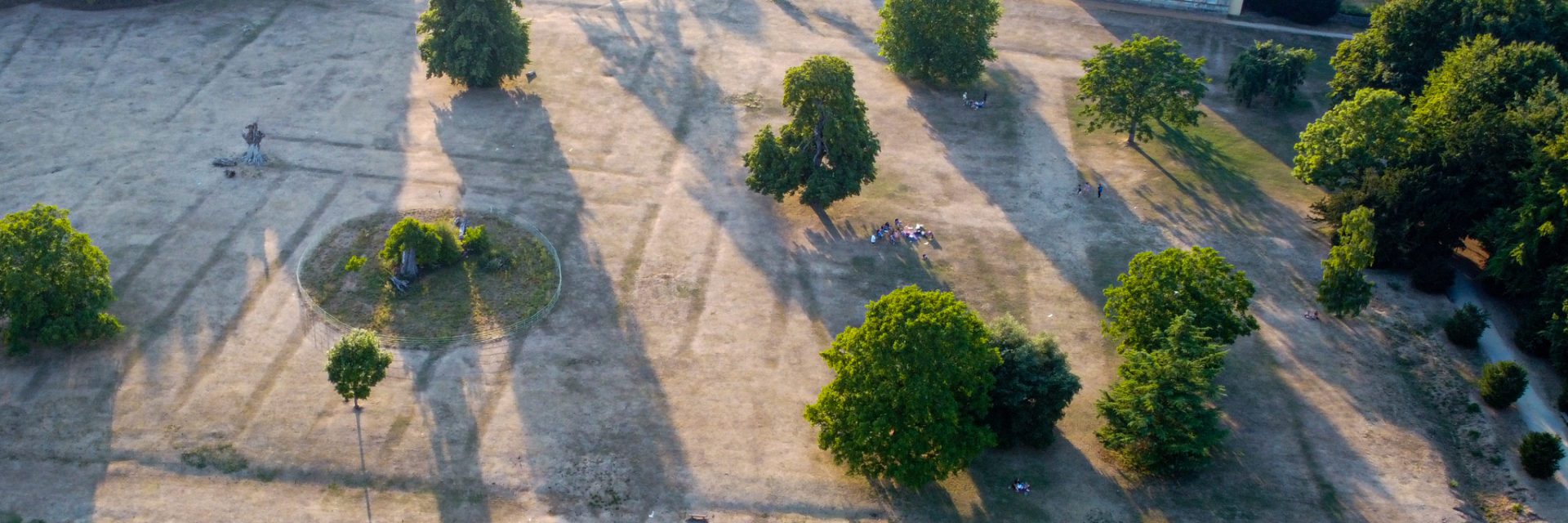

Swept away some 250 years ago and now stunningly revealed, Lydiard’s 17th century gardens can be traced on the sunbaked lawns surrounding the mansion. Aerial photography has captured the extensive gardens which once led down to the lake, then a formal canal, confirming evidence found in a plan of the park made in 1700.
Suspecting that the prolonged dry weather might reveal garden archaeology, The Friends of Lydiard Park were delighted when local resident Phil Jefferies agreed to take some aerial photographs.
“The results have exceeded all our expectations”, said Friend’s Chairman Sarah Finch-Crisp, “and we are very grateful to Phil for responding so quickly to our request for photography. It is exciting to see the grid of this vast ornamental garden for the first time. Limited excavations have taken place in the past, but this is the clearest evidence of its existence to date”.
In 2021 The Friends of Lydiard Park commissioned local artist Billy Beaumont to paint a picture of the old manor house and gardens at Lydiard Park, using the 1700 plan of the park as his guide. Billy meticulously re-created the Elizabethan style manor house fronted by a gravel forecourt, railed and gated from the park. The painting can be viewed in Lydiard Park Hotel & Events Centre.
The gardens are also recalled in the letters of Lady Johanna St.John to Thomas Hardyman, her steward at Lydiard Park with advice and instructions on sowing, planting and tending her flowerbeds.
However, fashions changed. Lady Johanna’s gardens were swept away following the remodelling of the old manor in the 1740’s by her grandson, Sir John St.John. The new Palladian mansion required an equally fashionable setting of open lawns, strategically placed clumps of trees and a naturalistic looking lake in the English Landscape Garden style made popular by William Kent and Capability Brown.
Today Lydiard Park is Grade II listed in The Historic England Register of Parks and Gardens of Special Historic Interest in England. Discovering evidence of its former design adds to its importance. Read more information on Lydiard’s Historic Landscape.
Further amazing aerial images of the 17th Century gardens can be found in The Lydiard Archives.